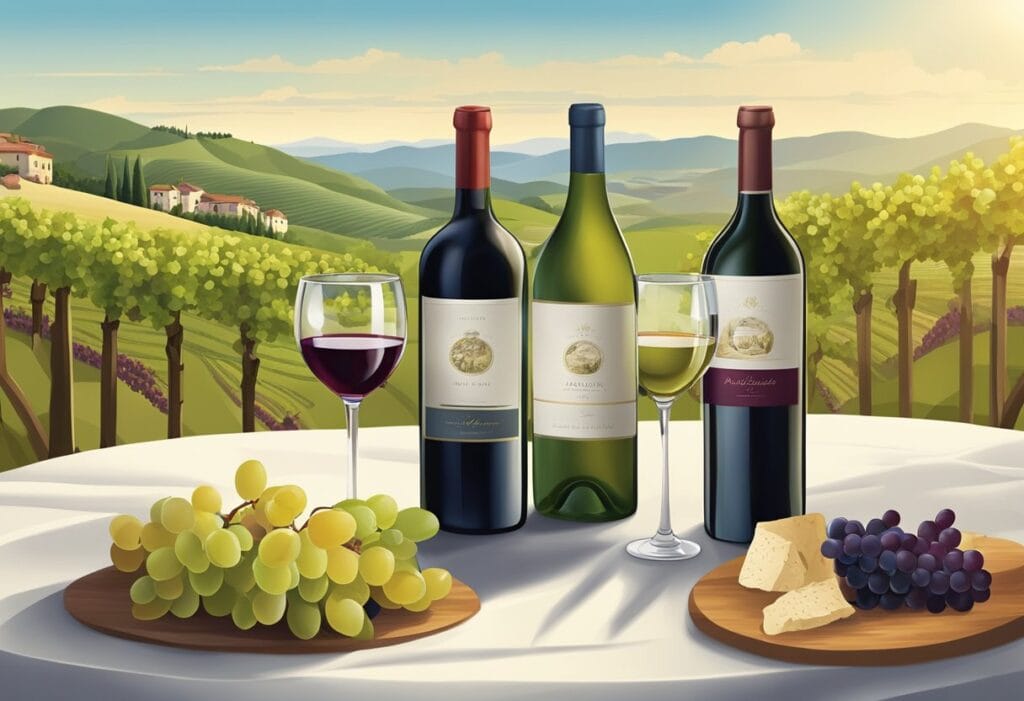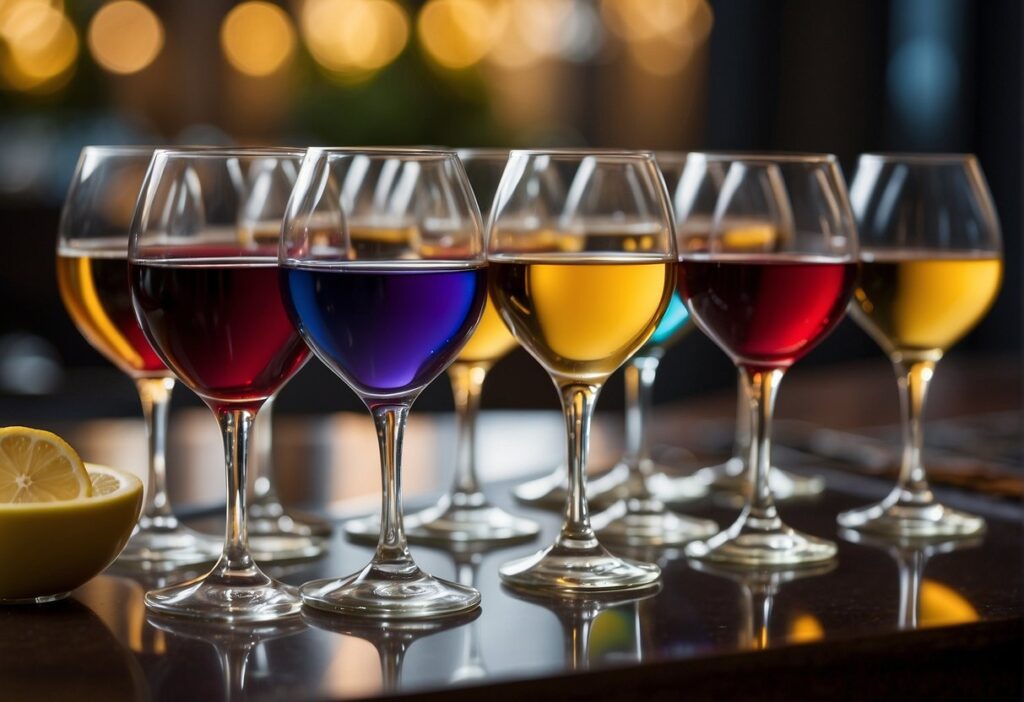Dry red wine is a staple in the world of viniculture, appreciated for its complex flavors and ability to complement a wide range of cuisines.
Characterized primarily by the absence of residual sugar, dry red wines deliver a robust taste profile that ranges from light and fruity to rich and full-bodied.
Whether you are a wine aficionado or a curious beginner, understanding the nuances of these wines can greatly enhance your tasting experience.
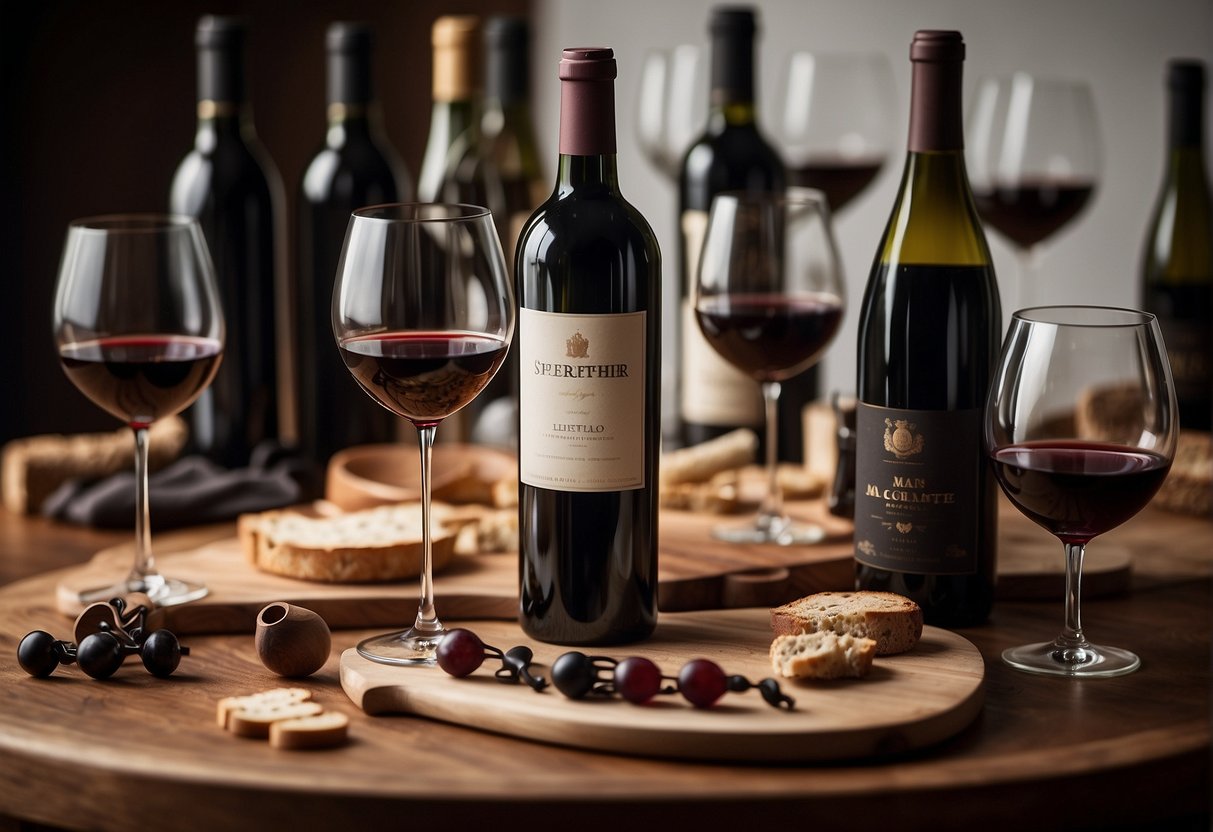
As you explore the different types of dry red wines, you’ll discover popular varieties such as Cabernet Sauvignon, Merlot, and Syrah.
Each type brings its unique attributes to the table, influenced by the grape used, the region where it’s produced, and the winemaking process itself.
Quality dry red wines will often boast a harmonious balance of tannins, acidity, and alcohol, contributing to their revered place in the world of fine wines.
Key Takeaways
- Dry red wines are diverse, with variations in flavor, body, and complexity.
- Recognizing the characteristics of each variety enhances the tasting experience.
- Quality wines balance tannins, acidity, and alcohol for a pleasurable finish.
Understanding Dry Red Wine
When you explore the world of red wines, knowing the difference between dry and sweet varieties enhances your tasting experience.
What Makes a Red Wine Dry
The term dry in the context of red wine refers to the absence of residual sugar.
During the fermentation process, yeast converts sugar from the grapes into alcohol. A wine is considered dry when this process results in little to no remaining sugar.
Tannins also play a role; they contribute to the dryness you perceive on your palate, often giving a sensation of bitterness or astringency that is typical in dry reds. Essentially, a dry wine is one where the sweetness is not perceptible, offering a cleaner finish.
Dry Wine vs. Sweet Wine
In contrast to dry red wines, sweet red wine and dessert wines have a noticeable level of sweetness, typically due to the fermentation process being stopped before all the sugar is converted. This leaves a higher amount of residual sugar.
The distinction between dry and sweet is not just about sugar levels but also about the balance of acidity, tannins, and alcohol – a harmonious mix that can make a full-bodied wine with high acidity still feel dry.
Dry wines might have complex flavor profiles ranging from fruit to earthy nuances, devoid of the pronounced sweetness found in their sweet counterparts.
Popular Varieties of Dry Red Wines
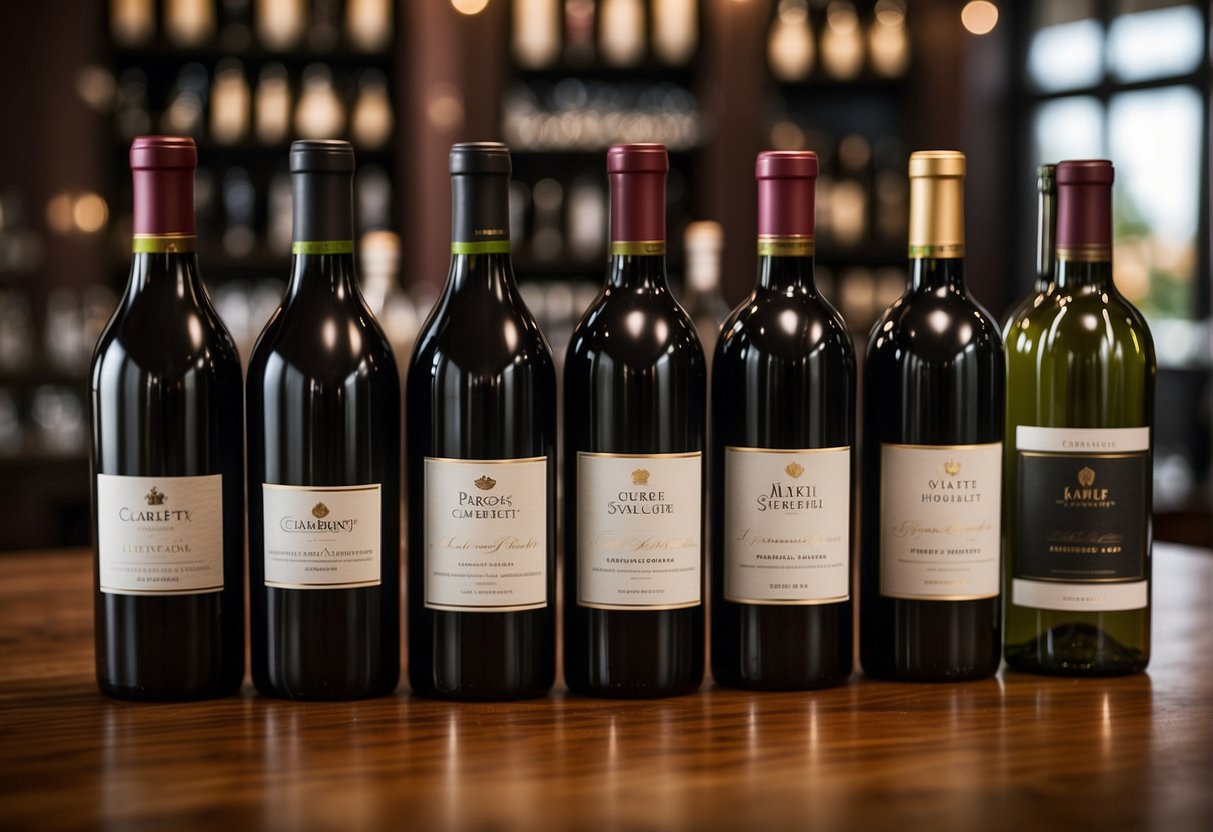
In this section, you’ll discover the unique characteristics of four widely enjoyed dry red wine varieties, each with its own flavor profile and regional associations.
Cabernet Sauvignon
Cabernet Sauvignon is renowned for its full-bodied nature and deep flavors that often include blackcurrant and a smoky note.
Ideal for aging, this varietal thrives in regions like Napa Valley and Sonoma County, where the grapes produce wines with rich complexity and sometimes a hint of tobacco.
Merlot
Merlot offers a softer, more accessible taste compared to Cabernet Sauvignon.
You might recognize flavors of cherry and vanilla from the Merlot grapes which lend this wine its smooth texture. It is a versatile varietal that pairs well with many dishes and serves as a great introduction to dry red wines.
Pinot Noir
The Pinot Noir grape is quite fickle, but when nurtured, it yields an exceptional wine with a lighter body that elegantly combines flavors of cherries, earth, and subtle complexity.
The Willamette Valley is famous for producing some of the finest Pinot Noir wines, highly sought after by enthusiasts.
Syrah
Syrah is bold with a notable presence of spice, blackberries, and sometimes a touch of smoke.
It is a robust wine that harmonizes well with grilled meats and hearty dishes, with origins traced back to the Rhone Valley but has since found success globally.
Popular Varieties of Dry Red Wines

When exploring dry red wines, you might be intrigued by the diverse flavors that distinct varieties offer, from the rich and fruity to the robust and spicy.
Each type of wine reflects the unique characteristics of its grape varietal and region of origin.
Malbec
Malbec is a rich, full-bodied wine known for its dark, inky color and robust flavors of blackberry, plum, and leather.
Originating from France but now synonymous with Argentina, specifically the Mendoza region, Malbec pairs well with red meats and hearty dishes.
Tempranillo
Tempranillo is Spain’s premier grape, celebrated for producing the renowned wines of Rioja and Ribera del Duero.
It offers flavors of cherry, tobacco, and cedar, often with a savory complexity that makes it perfect for pairing with grilled meats and aged cheeses.
Sangiovese
Sangiovese grapes are the heart of Chianti wines from Tuscany.
These wines express cherry notes along with dried herbs and earthy flavors. Sangiovese is versatile with food and can complement a wide range of dishes including pasta with red sauce and pizza.
Grenache
Grenache, or Garnacha as it’s known in Spain, is famous for its contribution to red blends and offers vibrant raspberry and spice flavors.
It’s the dominant grape in southern Rhône wines and is appreciated for its soft fruitiness and subtle tannins.
Global Regions for Dry Red Wine
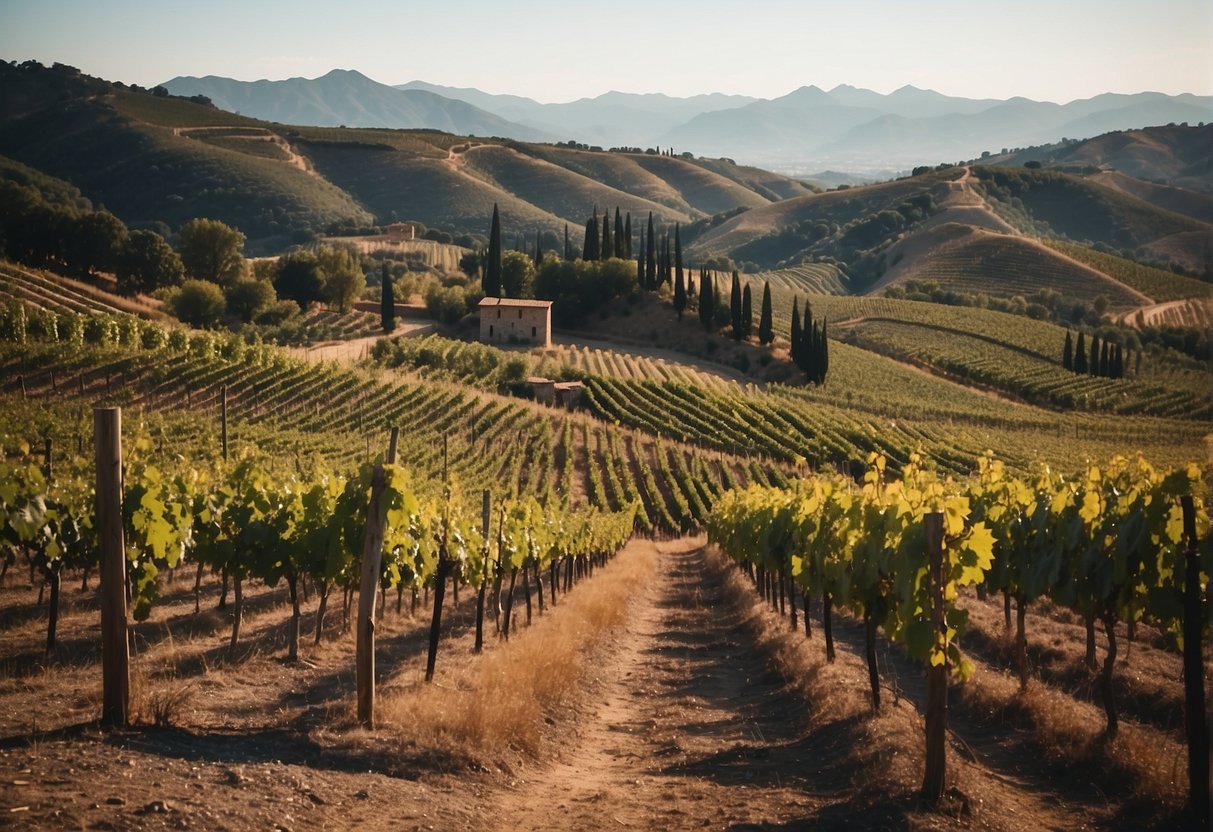
Exploring the world of dry red wines, you’ll discover that specific regions are famed for their unique contributions.
You’ll notice each area has a distinct set of characteristics influenced by the local climate and winemaking traditions.
France
In France, dry red wine comes from several regions, each with its own iconic style.
Bordeaux wines, often referred to as Bordeaux-style, typically blend varietals like Cabernet Sauvignon and Merlot, giving you balanced and complex wines.
Burgundy is celebrated for its pure expression of Pinot Noir, offering wines with depth and elegance.
Italy
Italy shines with a diverse range of dry red wines.
Tuscany is home to the famous Chianti, crafted mostly from Sangiovese grapes. It’s known for its bright acidity and rustic charm.
Beyond Chianti, Tuscany also offers bold wines known as Super Tuscans that often include non-indigenous varietals like Cabernet Sauvignon.
Spain
Heading over to Spain, the Rioja region produces some of the country’s most prestigious dry reds.
Made primarily from Tempranillo, Rioja wines can range from light and fresh to deeply concentrated, often with a signature oak influence from traditional aging methods.
Global Regions for Dry Red Wine

Dry red wines flourish in varied regions across the globe, each offering you a distinctive taste influenced by the local terroir.
Whether you’re savoring a robust Shiraz or a delicate Pinot Noir, these wines reflect the spirit of their origins.
United States
In the United States, dry red wines are synonymous with regions like California, home to the prestigious Napa Valley and Sonoma County, which are renowned for producing exceptional Bordeaux-style and Burgundy varieties.
Oregon and Washington are also key players, particularly for Pinot Noir, giving you a taste of the diverse American winemaking landscape.
Australia
Australia is celebrated for its bold and spicy Shiraz, especially from regions like Barossa Valley and McLaren Vale.
Australian Shiraz offers a unique profile that is both robust and nuanced, ensuring a memorable experience for lovers of dry red wines.
Argentina and Chile
Moving south to Argentina and Chile, you discover the rich, velvety flavor of Malbec in Mendoza, Argentina’s wine country.
Chile contributes with its signature Carmenere, a grape that has found its second home and revives the old-world charm with a new-world twist.
South Africa
South Africa might be newer to the scene, but its contribution with Pinotage, a cross between Pinot Noir and Cinsault, cannot be overlooked.
South African dry reds impress with their depth and range, reflecting the unique characteristics of the region’s terroir.
Dry Red Wine and Food Pairings
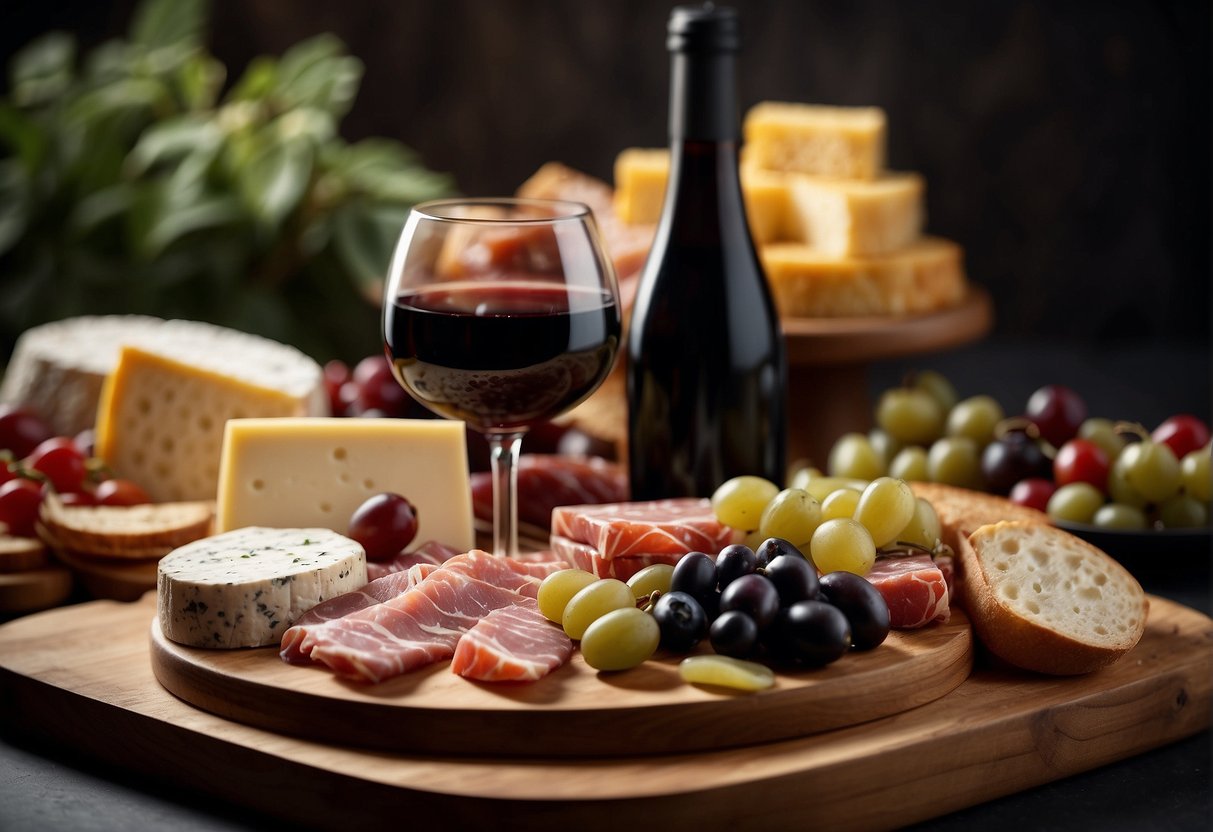
Selecting the right food to accompany your dry red wine can elevate the flavors of both the drink and the dish.
Here’s how you can pair dry red wines with different foods to enhance your culinary experience.
Meat Dishes
Your grilled meats pair exceptionally well with a glass of robust dry red wine. Here’s a simple guide:
| Wine Type | Best Meat Pairings |
|---|---|
| Cabernet Sauvignon | Grilled steak with black pepper |
| Merlot | Roast lamb or beef stew |
A stew with rich flavors or a perfectly seasoned roast beef complement the tannins in these wines, balancing taste and aroma.
Vegetarian Options
Even without meat, you can find exquisite pairings for your dry red wine. Consider these combinations:
| Wine Type | Vegetarian Pairing |
|---|---|
| Pinot Noir | Mushroom risotto |
| Chianti | Pasta with tomato sauce |
Both mushrooms and pizza with a generous topping of veggies become more flavorful with these wine selections.
Cheese and Wine Nights
Turn your cheese and wine night into a gourmet experience. Here’s a quick pairing guide:
- Bold reds like Shiraz: Pair with aged cheeses like Gouda.
- Medium-bodied reds like Tempranillo: Try with Manchego or other semi-hard cheeses.
Enjoy how the creaminess of the cheese contrasts with the wine. A piece of dark chocolate can also be a delightful end to your tasting session.
The Wine-Making Process
When you savor a glass of dry red wine, you’re experiencing the culmination of a detailed winemaking process. This process begins with grape selection and ends with bottling.
Harvesting and Fermentation
Harvesting is the first critical phase where winemakers decide the optimal time to pick the grapes, ensuring their sugar levels and acidity are just right.
They usually do this between August and October. Once collected, the grapes are destemmed and crushed.
The fermentation process begins next, transforming grape sugar into alcohol. During this stage, yeast plays a vital role. For dry red wines, the fermentation continues until almost all the sugar is consumed, leaving less than 1% residual sugar.
Aging and Bottling
After fermentation, red wines often go through malolactic fermentation. This turns sharp malic acid into smoother lactic acid. This step also adds complexity to the wine.
The aging period allows the wine to develop rich flavors. It can occur in stainless steel or oak barrels. Using oak barrels is a tradition for maturation, as it imparts unique notes of vanilla, spices, and toast. Aging can last from several months to years depending on the desired outcome.
Bottling is the final stage where the wine is either directly bottled or blended with other wine varietals to create the perfect blend. Some wines may also undergo additional bottle aging to reach full potential. This careful process ensures that once you uncork the bottle, you’re greeted with a wine that’s ready to be enjoyed.
